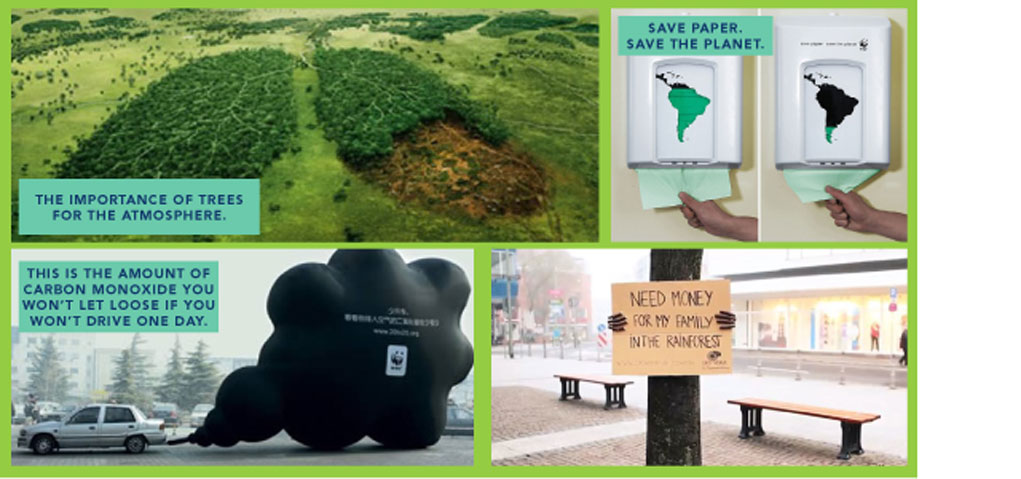In past columns, I stressed the importance of your company standing for a value that society values. I did so, and will continue to do so, because the value of doing so has a momentum that is only increasing, with no end in sight.
As I’ve said numerous times, and will repeat as a reminder, your customer wants your business to have a purpose that transcends making money. They want your company to serve society in a manner that transcends commerce and Wall Street valuations.
There are numerous purposes that would be suitable. In this column, I will deep dive into one of the top-tier purposes: green ecology.
Or, as it is most often referred to: sustainability – sustaining the health and the resources of the planet.
Headlines, government edicts, and ads are testimonials to the sledgehammer impact the subject is having on the consciousness of consumers everywhere.
There is a diversity of approaches you can use to evaluate which sustainability strategy is most suitable for your company’s operations, process, and profitability. A strategy where the “glove” fits.
However, the prior step is to have your “purpose,” in this case sustainability, aligned with the values not only of your company and customer base, but also your employees. A major research paper in Harvard Business Review emphasizes the critical importance of your employees sharing your company purpose.
When that takes place, data has revealed a quantifiable leap in employee satisfaction, and productivity, which in turn can be measured as quantifiable growth of your ROI. A very telling measurement is retaining employees, which in these days of “exiting the business world” has led to an identifiable poverty of qualified employees. Not only does retaining prevent a gap in operations, but it also saves the cost of finding, hiring and training new employees.
The flip side of when employees do not share company values is the employee disengagement that Gallup estimates costs US business $300 billion in lost productivity.
Knowing whether your employees are aligned with your purpose can only happen through 2 basic steps:
Clear communications of your company’s purpose.
Surveying your employees as to their alignment with the purpose.
If, indeed, your employees are in sync with your sustainability purpose, how do you proceed in developing an effective marketing strategy to communicate and benefit from this direction?
There are several effective strategies, one or more of which may be applicable to your company.
Strategy 1: Doing Less Bad.
This strategy covers production considerations: how your products are made, e.g., emissions, child labor, working conditions.
Within this strategy, there are three sub-strategies.
Sub-strategy 1: Supplier Responsibility
“Apple has zero tolerance for forced labor or human rights violations of any kind. Our Human Rights Policy outlines how we treat everyone that our business reaches — our employees, our customers, and the people in our supply chain. Apple suppliers are held to the highest standards of labor and human rights, health and safety, environmental stewardship, and ethics.
We evaluate our supplier’s performance in upholding our standards through rigorous independent assessments… Apple has zero tolerance for forced labor… No matter where people work, they are protected by our industry-leading standards.”
Sub-Strategy 2: Product Characteristics – what the product contains and what it does, e.g., CO2 emissions of use, chemicals, etc.
“We recognize the role we play in contributing to climate change and our responsibility in solving it. That’s why we’re embracing the goal of becoming 100% green by reducing our greenhouse gas emissions 100% by 2050.
“In 2016, United became the first airline globally to fly on SAF on an ongoing, daily basis, supplied to our Los Angeles hub by AltAir Fuels (now World Energy). Using technology from Honeywell UOP, World Energy’s refinery in Paramount, California, has been retrofitted into an advanced sustainable fuel facility that converts feedstock, such as agricultural wastes and non-edible natural oils into low-carbon advanced sustainable fuels. In recognition of our work in this area, United was named a ‘Leading Airline’ by the Natural Resources Defense Council (NRDC) for having a strong range of commitments and supply chain implementation.”
Sub-Strategy 3: Exposures and Risks – product use effect on people and the environment.
“On these pages you will find the ingredients lists for each product sold in Europe within our home and personal care brands.
“We also tell you about how our products are developed and describe the careful steps we go through to make sure that they are safe for you, your children, and the environment. If we have left any questions unanswered, please get in touch with us.”
Unilever lists every country in which its products are sold and communicates the comprehensive product details in the language of that country.
Another example of this strategy is Lush Skin Care products:
“We put an enormous amount of love and care into every product we make, and it’s important for us to work with suppliers who do the same.
“When sourcing ingredients for our products, transparency in our supply chain is key: where they come from, how they’re made, and how they impact the communities that produce them. From raw materials like Moringa Oil and almonds to knot-wraps and our black pots, our dedicated Ethical Buying team works hard finding natural raw materials, safe synthetics, 100 percent recycled packaging, or alternatives to harmful ingredients like microplastics.
“Working directly with farmers and communities gives us a better understanding of the materials, where they’re from, how they’re produced, and what the potential labor or environmental issues might be. We believe in buying from small-scale producers, which gives us the opportunity to drive positive change, encourage sustainability, and form long-lasting relationships with people all over the world. Knowing intimately the impact our buying has on the people and environment, we’re able to make responsible decisions about where and how we purchase ingredients and packaging.”
The Doing Less Bad strategy minimizes, if not obviates, the negative impact on the planet and the people who populate the planet.
Strategy 2: Doing More Good
Doing More Good is not about avoidance of the negatives. It is about positive changes that bring about sustainability through positive lifestyle changes.
Doing More Good is focused on promoting sustainable lifestyles.
Rent the Runway developed a sustainable mode for acquiring the latest fashion: rent rather than buy.
“Fashion Freedom
Explore different styles, discover designers, and try new things from the largest designer rental clothes.
Forget the Price Tag
Finally, the solution to wearing everything you want, no purchase necessary.
Sustainable Footprint
Most clothes we buy end up in the back of closets or landfills. Power the sharing economy and rent instead.
Interface Carpet Tile developed carpet tile that brings home a sustainable lifestyle.”
“Less carbon in the atmosphere. More beauty on your floor.
The Embodied Beauty™ collection is designed to help restore the health of the world and lower the carbon footprint of your space with style. The collection features a range of beautiful carpet tile designs, including our first-ever carbon negative products in three unique styles: Shishu Stitch™, Tokyo Texture™, and Zen Stitch™.
The collection lives up to its name and shows that the pursuits of beautiful design and sustainability are inseparable. In addition to the three cradle-to-gate carbon negative styles, as part of our commitment to Climate Take Back™, all the styles that are featured within the collection are carbon neutral across their full product life cycle.”
In the next column, I will cover other eco-green marketing strategies that may be equally or even more applicable to your company.
Like all marketing strategies, eco-green must mesh perfectly with the culture and mindset of your company. It cannot be a rubber stamp strategy.
Find the proper strategic fit, and you will be planting eco-green dollars as numerous as…uh…blades of grass…leaves on a tree…uh…petals on chrysanthemums…

Interested in developing your creative thinking skills to grow your business? Maybe even disrupt your business category? Subscribe to my “Unleash Your Creative Thinking” free email course. Email bullseyemarketing1@gmail.com, with “Creative Thinking” as the subject.
Chanina Katz has over two decades experience in major Madison Ave. ad agencies developing highly successful strategies and award-winning campaigns for such blue-chip clients as Colgate, RJ Reynolds, Hilton, Home Depot, General Mills, KFC and many others in a wide variety of package goods and services businesses. He provides marketing services for a range of businesses, from start-ups to major corporations. He lectures on marketing and creativity. He can be reached at Bullseyemarketing1@gmail.com.








